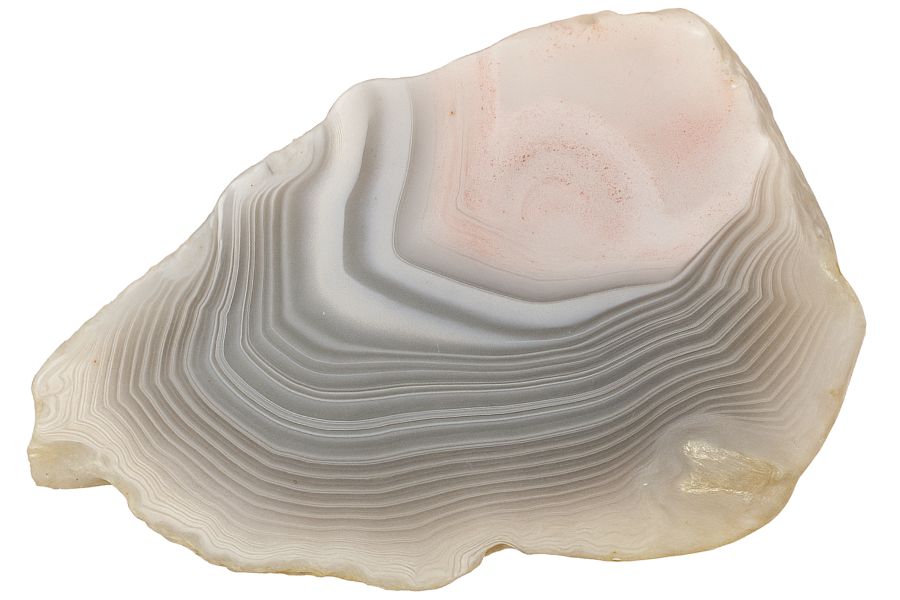Agates in Virginia appear in more places than most people would expect, making the search for them a rewarding pursuit. They show up in waterways, in open fields, and even in areas with disturbed ground where you might not think to look.
Creeks and small rivers are great places to start, as they often carry stones into open view and deposit them in gravelly beds. You can also have success searching piles of rock left behind by old work and even along the edges of small-town construction sites.
We’ve put together an article that can point you toward the specific parts of Virginia where agates are most often found. By learning where to focus your attention and how to search carefully, you can quickly build a collection that reflects the state’s surprising variety.
What is Virginia Agate?
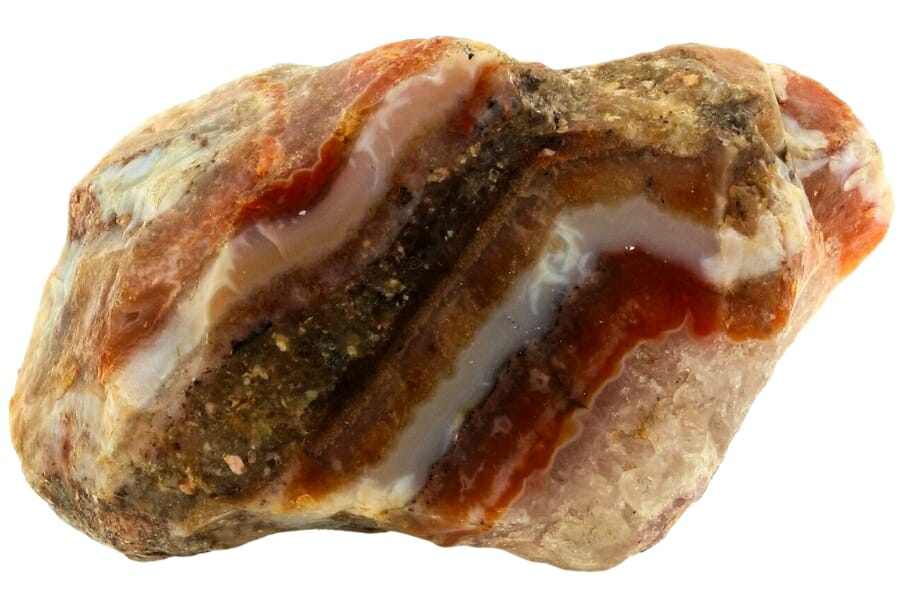
At its heart, agate is a type of quartz, which is a super common mineral. But these rocks are special because they have all these cool bands and swirls of different colors. This beauty definitely puts agate’s price and value a notch higher.
Its patterns come from the way they form. They start out in holes in rocks, and over a long time, slow drips of water carrying minerals fill these holes. As the minerals build up layer by layer, they create the awesome designs that this rock is famous for.
Agates are often found in volcanic rocks or areas that had lots of volcanic activity in the past. They can also be found in certain riverbeds and beaches, where the movement of water has uncovered them over time. Some famous sources include Brazil, Mexico, and even parts of the USA.
If you’re in Virginia, you’re in luck! With a keen eye and a bit of persistence, you can uncover these hidden gems here, too.
Now, you might be wondering about where to mine for agate in Virginia, but before we dive into that, let’s quickly go through the different kinds of agates and whether you can find them here:
Blue Lace Agate
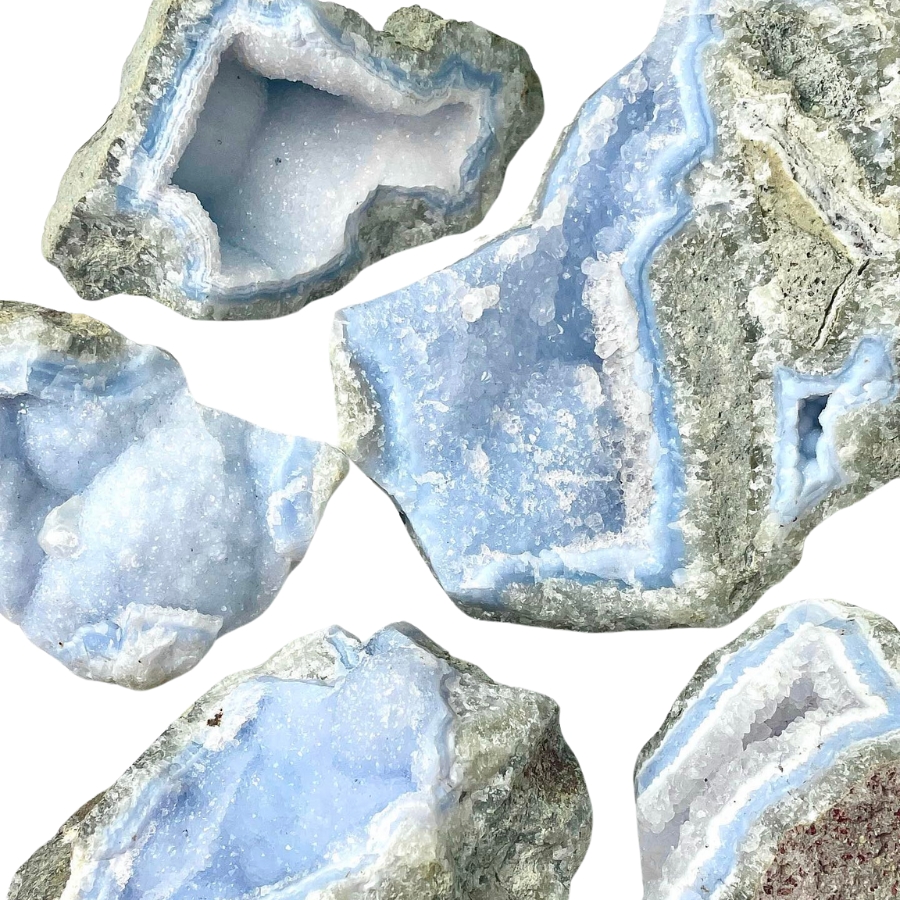
Blue lace agate is like the soft, sky-blue waves with lines that swirl and twist like delicate lace.
Its pattern comes from slow-forming layers of quartz, which create those beautiful, lace-like bands.
The bands of this agate type are often in shades of light blue, white, and sometimes a bit of grey. It’s different from other agates, which usually have more intense colors and stronger patterns.
The value of blue lace agate lies in its soft, tranquil look and the feeling of calm it brings. It’s often used in jewelry or as a decorative stone.
If you want REAL results finding incredible rocks and minerals you need one of these 👇👇👇
Finding the coolest rocks in isn’t luck, it's knowing what to look for. Thousands of your fellow rock hunters are already carrying Rock Chasing field guides. Maybe it's time you joined the community.
Lightweight, mud-proof, and packed with clear photos, it’s become the go-to tool for anyone interested discovering what’s hidden under our red dirt and what they've already found.
Join them, and make your next rockhounding trip actually pay off.
What makes it different:
- 📍 Find and identify 140 incredible crystals, rocks, gemstones, minerals, and geodes across the USA
- 🚙 Field-tested across America's rivers, ranchlands, mountains, and roadcuts
- 📘 Heavy duty laminated pages resist dust, sweat, and water
- 🧠 Zero fluff — just clear visuals and straight-to-the-point info
- ⭐ Rated 4.8★ by real collectors who actually use it in the field
Moss Agate
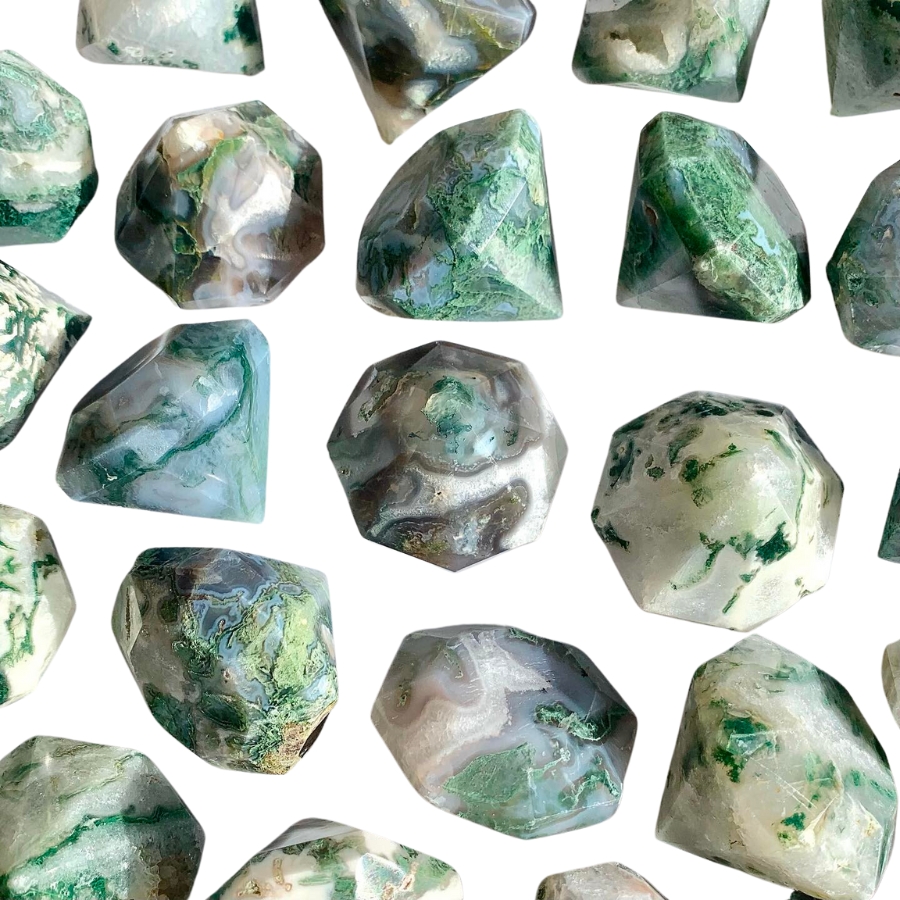
Instead of having the typical banding for which the different types of agates are known, moss agate has green inclusions that look like moss or trees.
These green patterns aren’t real plant material, though. They’re minerals like chlorite or iron oxide.
In some cultures, this type of agate is known as the “gardener’s stone” because of its green, plant-like appearance. It’s believed to help plants grow.
The price of moss agate can vary. It’s often quite affordable, but the more distinct and picturesque the green patterns, the more it might cost.
Fire Agate
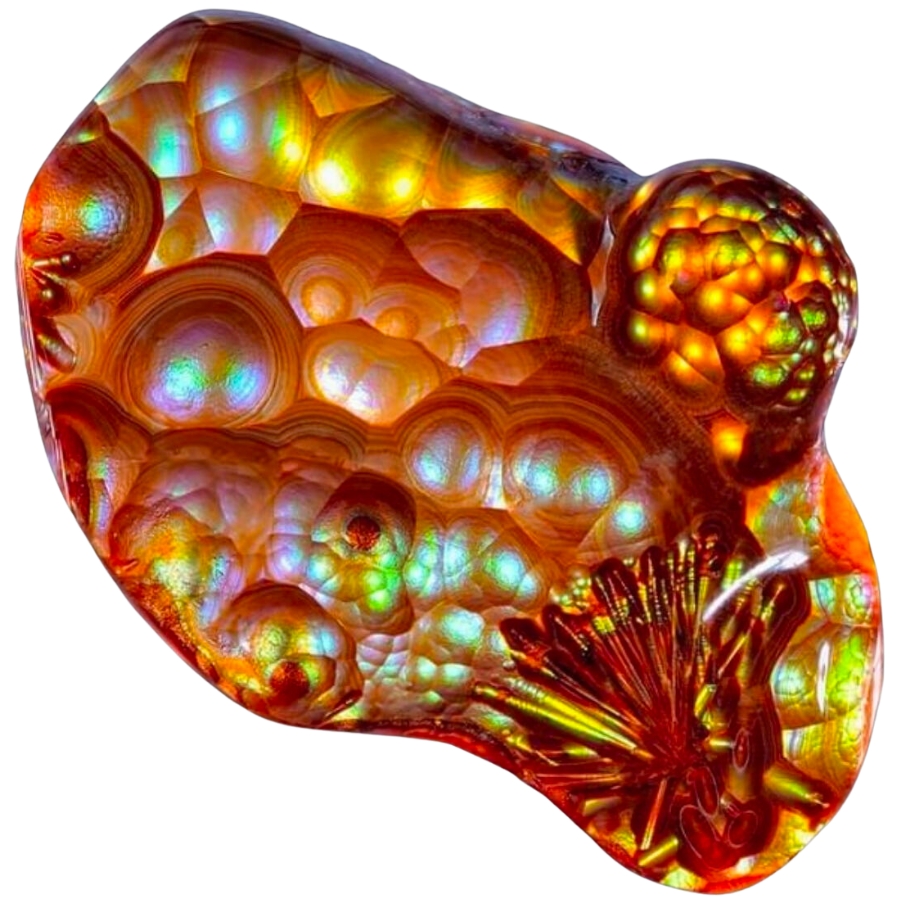
Fire agate is known for its incredible colors and the way it sparkles like fire. It’s got layers of silica and iron oxide that reflect light, creating a fiery effect.
When you look at fire agate, it’s like seeing flames trapped inside. Its colors can range from reds and oranges to greens and golds, all shimmering under the surface.
You might be wondering, “What is fire agate worth?” Well, its value comes from its rare beauty. The more color and sparkle, the more valuable the stone is.
Its fiery iridescence and lively play of color are used in jewelry pieces that are meant to stand out.
Dendritic Agate
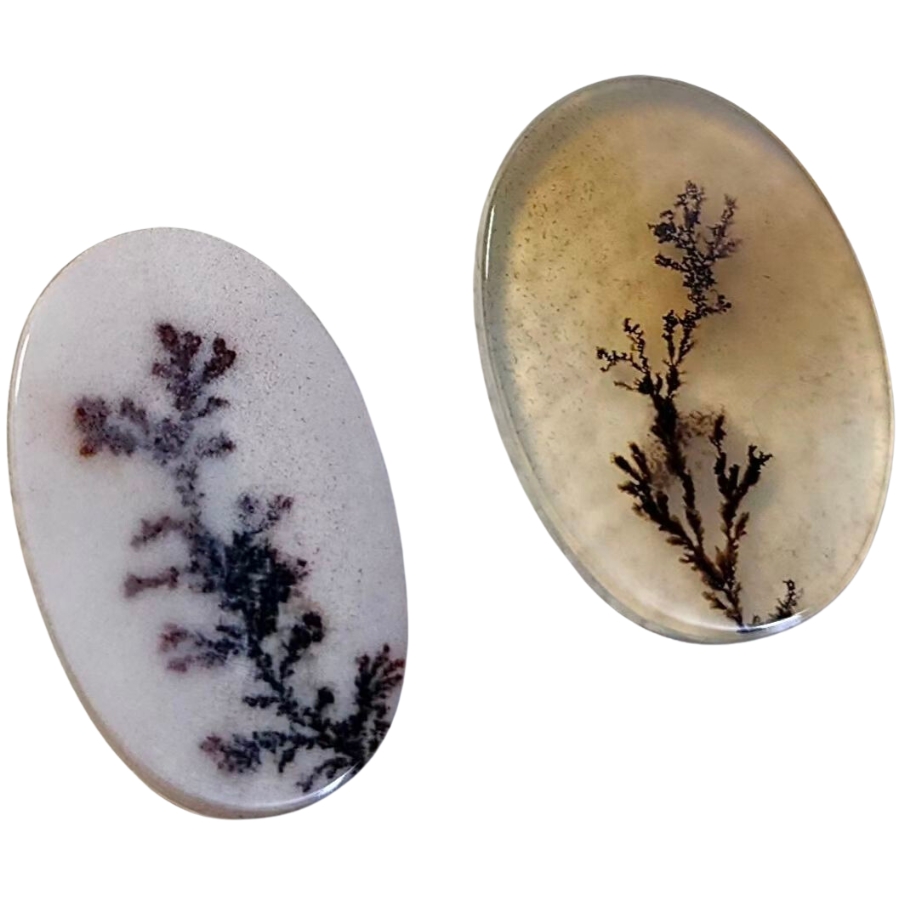
Dendritic agate is known for patterns that look like tiny trees or shrubs. Like moss agate, these patterns aren’t actual plants. They’re made of minerals, mostly manganese or iron oxides.
When you look at a dendritic agate, it’s like peering into a miniature forest or a frosty winter landscape.
The base of the stone is usually translucent to opaque, and the “dendrites”— those tree-like patterns— are often black or brown.
When it comes to how much dendritic agate is worth, it can vary. The more detailed and distinct the patterns are, the more it’s usually valued.
In some cultures, dendritic agate is believed to bring fullness and richness to life.
Crazy Lace Agate
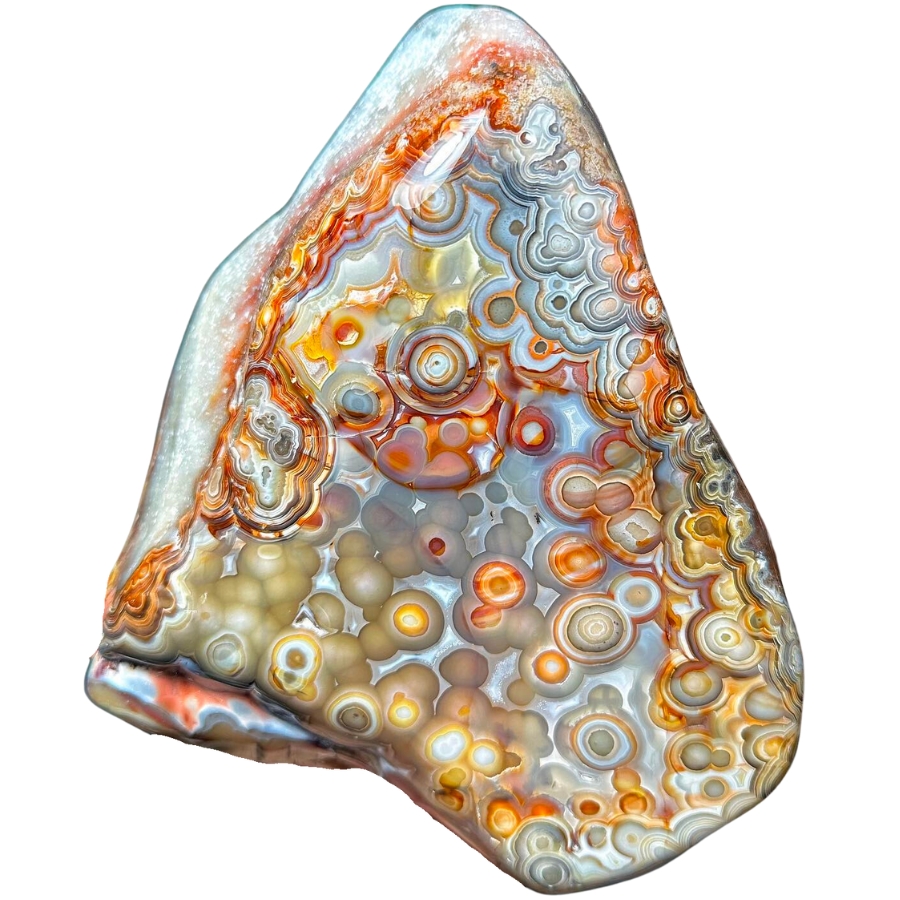
Crazy lace agate is like a party in a rock! It’s got swirls, circles, and all sorts of wild patterns dancing across it.
Its colors can be a mix of red, orange, yellow, and brown, and sometimes even a bit of gray or white.
What makes crazy lace agate stand out is its vibrant and complex patterns. No two pieces are the same. This distinctiveness is a big reason why it’s so valued.
Despite its wild and ‘crazy’ appearance, it’s sometimes called the “Laughter Stone” or “Happy Lace” because of the joy and positive vibes it’s believed to bring.
Laguna Agate
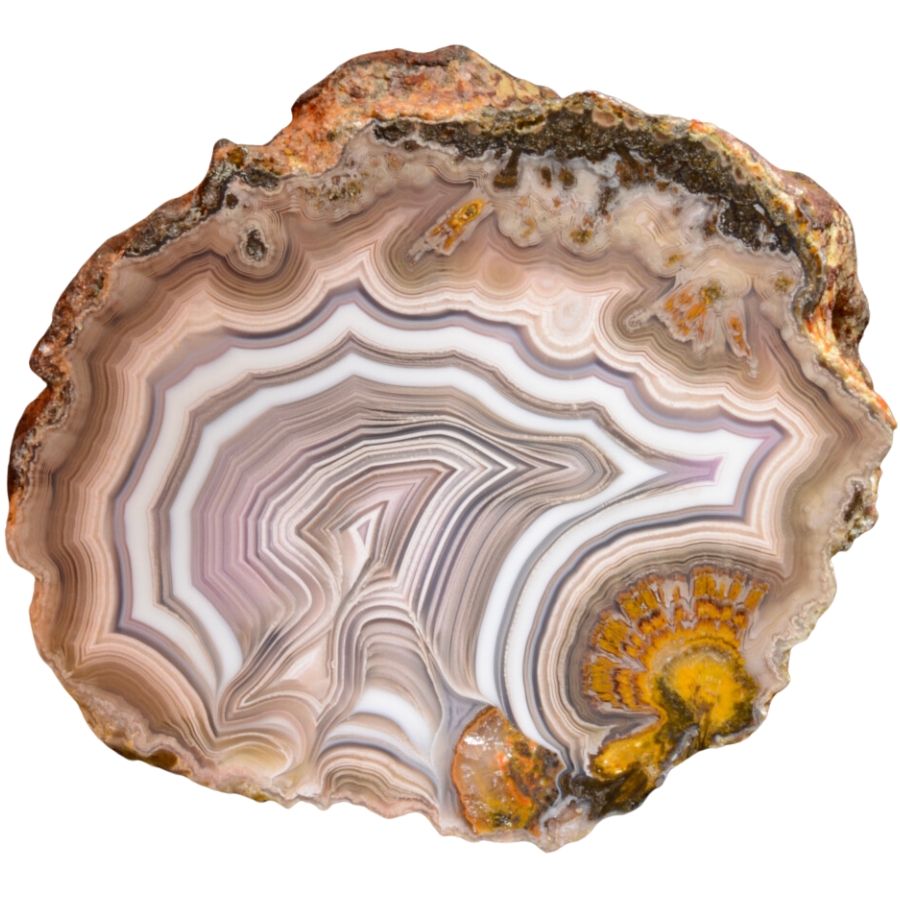
Laguna agate has incredibly sharp and fine banding. It has layers of red, orange, pink, yellow, and sometimes even purple and white all stacked in neat, tight bands.
These bands can form eye-catching patterns, like swirls, loops, and even landscapes.
The different colors of its bands come from various minerals present in the water at the time of its formation.
Laguna agate is considered one of the finest agates in the world due to its exceptional banding. This high regard among agate varieties makes it a prized possession for collectors.
Condor Agate
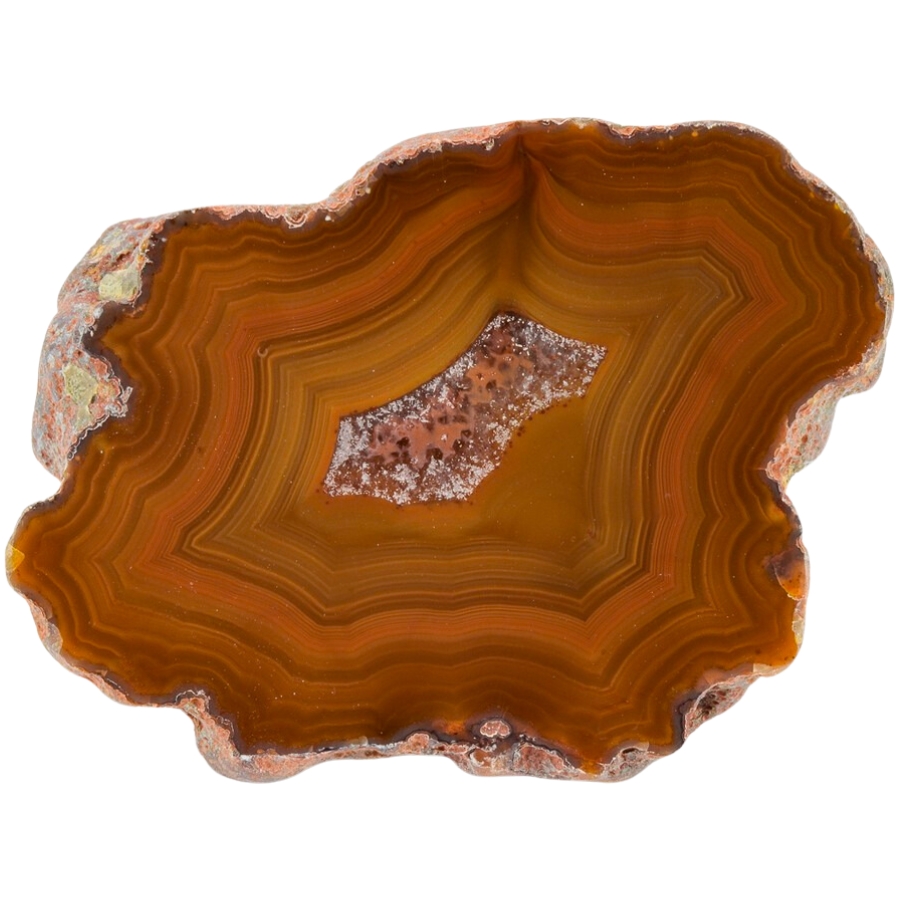
Condor agate is a real standout. It’s known for its bright, vivid colors and complex patterns.
It has reds, oranges, yellows, and sometimes even blues and greens all swirling together. These colors form in bands or in more random, artistic patterns.
The intensity and variety of its colors is what makes condor agate so special. It’s often used by artists and craftsmen who want to make a statement with their work.
Condor agate’s bold colors and patterns can turn a simple piece of jewelry or art into something really eye-catching.
Fortification Agate (Banded Agate)
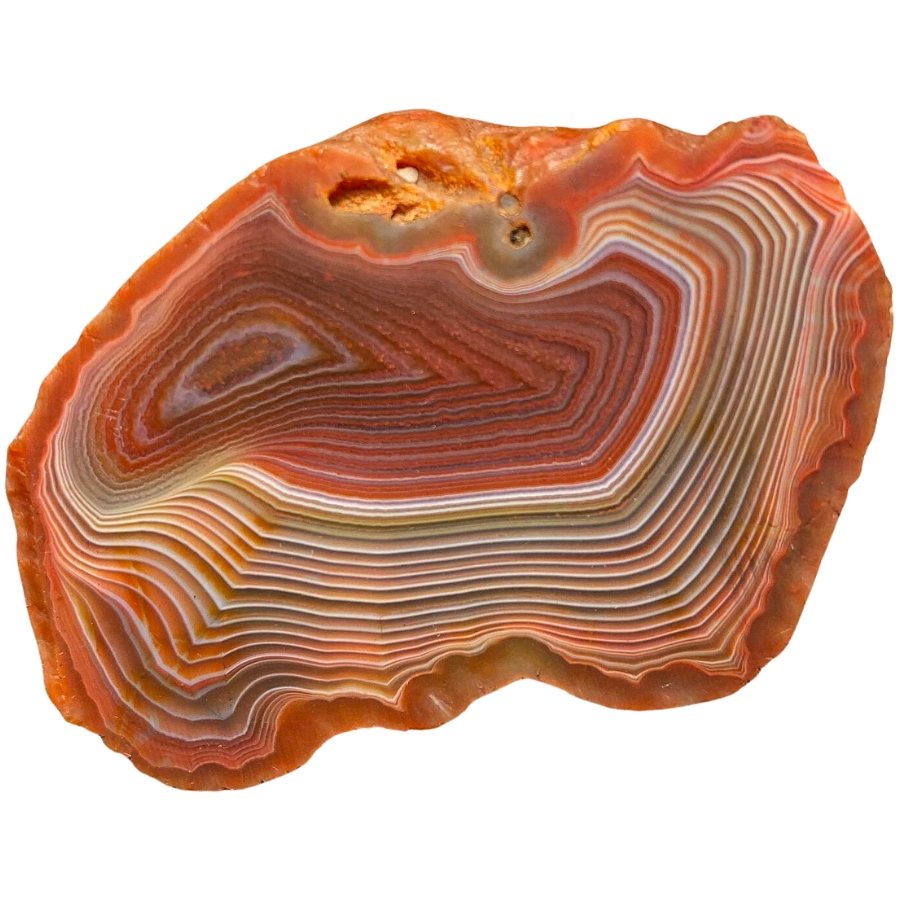
Fortification agate gets its name because the patterns inside it look like the aerial view of a fortified city.
Imagine seeing bands of color forming shapes that look like walls, with sharp angles and curves. They are usually in different colors, making each layer stand out.
If fortification agate is valuable, it’s because of its distinct patterns and colors. Its unique look makes it sought after for jewelry and as a collector’s item.
The clearer and more defined the patterns, the more valuable the stone can be. Some people also believe it can help with relaxation and calmness.
Iris Agate
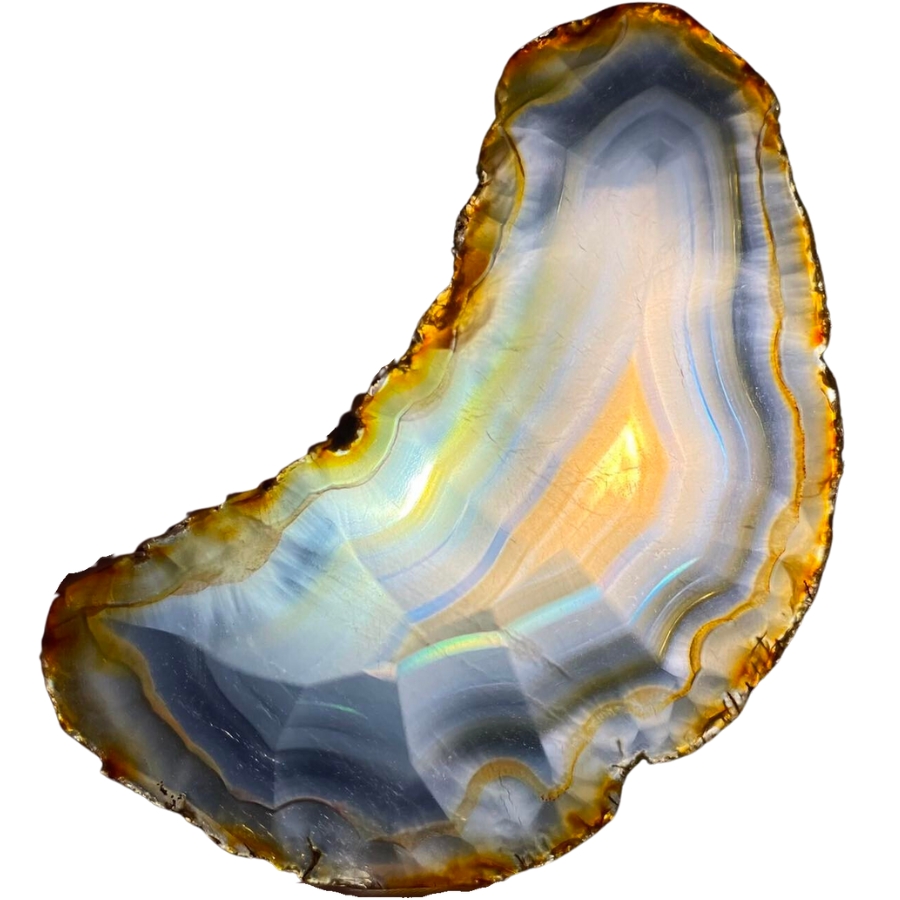
Iris agate looks like a regular agate at first, but when you hold it up to the light, something amazing happens. It shows all these rainbow colors, like light passing through a prism.
This is because it has very thin layers of silica, and when light hits these layers, it splits into all the colors of the rainbow.
The formation of iris agate is similar to other agates, but its layers are super thin, which is what creates the rainbow effect.
The value of iris agate comes from its unique ability to show these colors. In the past, people even used to think it had magical properties because of the way it showed colors. They saw it as a stone of good luck and wonder.
Plume Agate
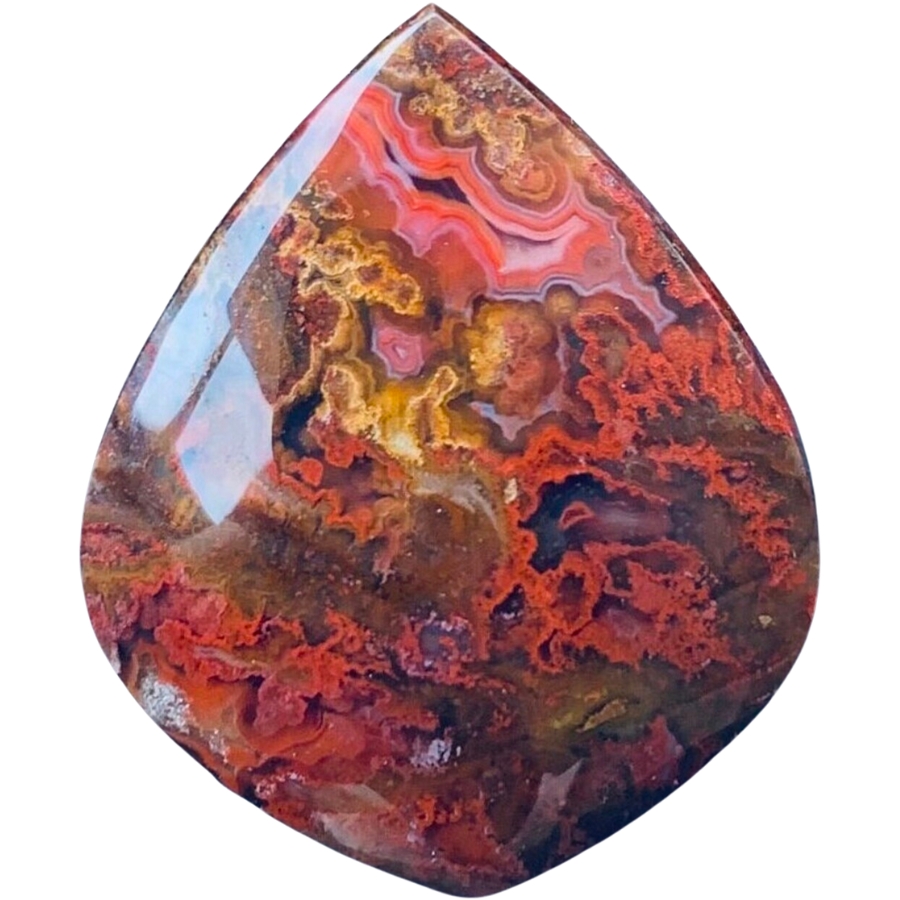
Plume agate gets its name from its patterns that look like soft, feathery plumes. These plumes can be in all sorts of colors: red, black, green, or yellow, set against a translucent or opaque background.
The way these plumes seem to float in the stone makes it look like a frozen underwater scene or like feathers caught in a breeze.
The plumes are made of minerals like manganese or iron oxide, which get trapped in the silica during the agate’s formation and create the feathery patterns.
The price of plume agate can vary depending on how clear and intricate the patterns are. The more detailed and colorful the plumes, the more the stone is usually worth.
Picture Agate (Scenic Agate)
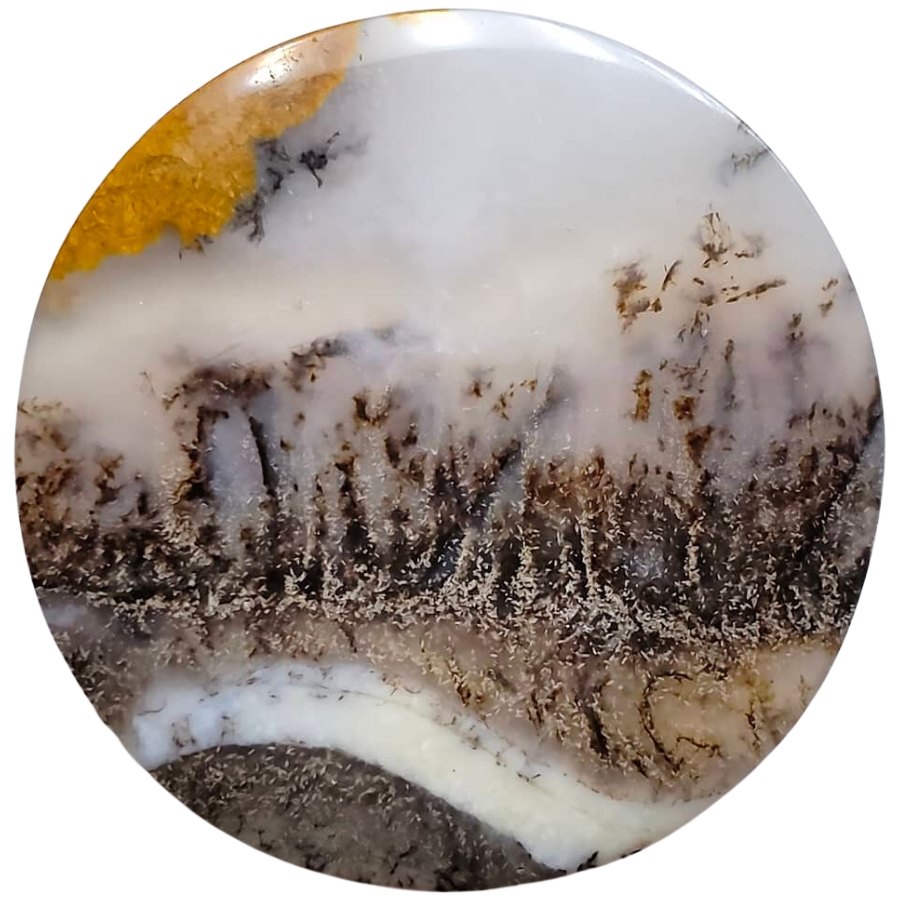
Picture agate is like a snapshot of nature captured in stone because it looks like it has pictures or scenes right inside it.
These “pictures” are actually natural patterns that resemble landscapes, mountains, trees, or even skies. They are usually in different shades of brown, white, and gray against a more translucent background.
The different patterns in picture agate or what’s also called scenic agate are made by various minerals in the water filled with silica that forms it.
If you’re thinking, “What is picture agate worth?“, its value comes from how distinct, clear, and detailed the natural “pictures” are.
Turritella Agate
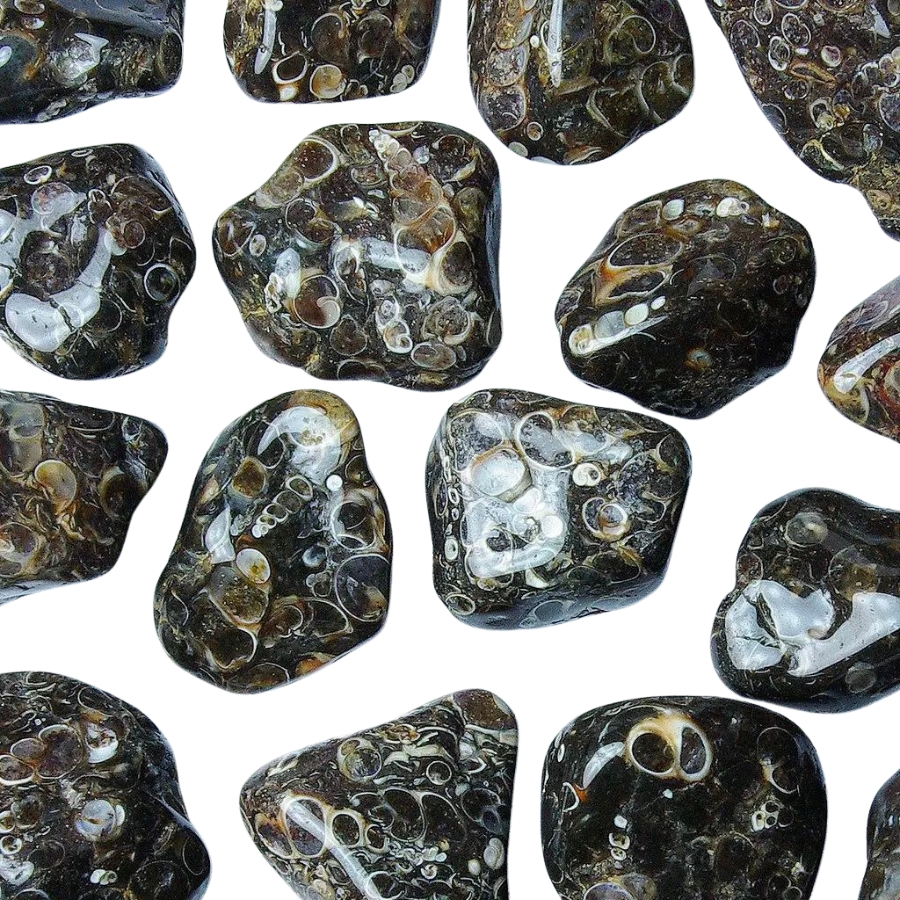
Turritella agate is not your typical agate because it’s full of fossilized snail shells! The shells belong to a creature called Turritella, a type of sea snail.
These shells are tightly packed and create a pattern that looks like a bunch of tiny, swirling towers. The background of the agate is usually a dark, earthy color, which makes the white or cream-colored snail shells really pop.
Over millions of years, these snail shells got buried in sediment and eventually became fossilized. As time went on, silica-rich water flowed through the sediment, turning it into the agate we see today.
The value of turritella agate comes from its unique blend of geology and history. More than a pretty stone, it’s a piece of ancient life preserved in rock.
Fairburn Agate
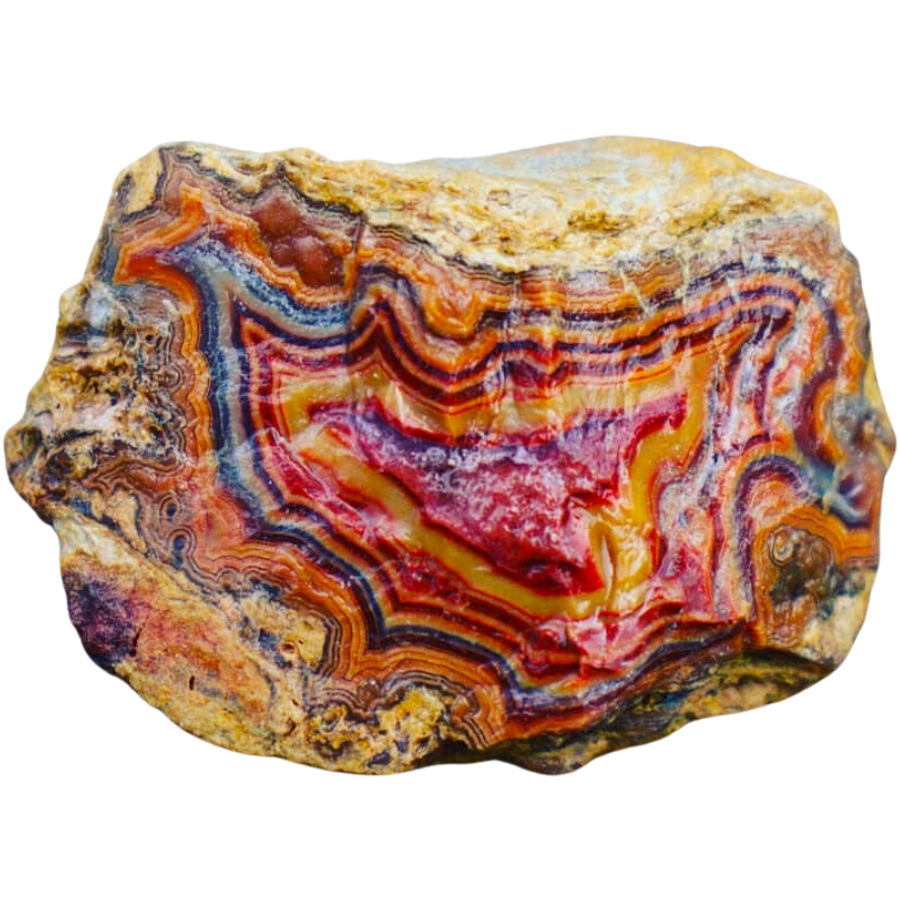
Known for its intricate patterns and bold colors, Fairburn agate is another fascinating type of agate. It usually has bands and swirls of different colors like red, yellow, orange, brown, and sometimes even pink or purple.
What’s special about these patterns is they often look like they’re in layers, creating a 3D effect. It’s like looking at a landscape made of stone.
It’s named after a place called Fairburn in South Dakota. This gives a clue about where it was first discovered.
People value Fairburn agate for the skill it takes to cut and polish it, which makes the patterns and colors really stand out.
Sagenite Agate
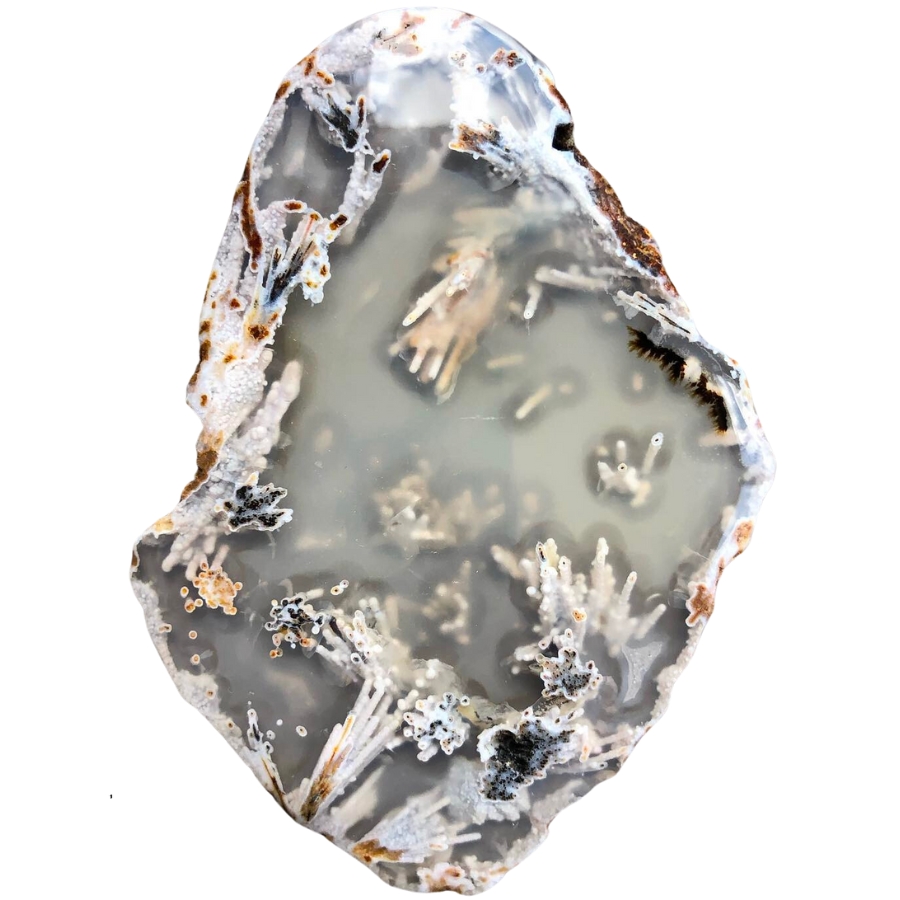
Sagenite agate has needle-like inclusions that look like tiny sprays of crystals inside it. They can be gold, silver, black, or even green, and they spread out in all directions, creating an amazing pattern.
The base of the agate is usually translucent, which lets you see these intricate needle patterns clearly.
These patterns are actually other minerals, like rutile or goethite, that get trapped inside the forming agate. These minerals grow in a crystal shape, looking like needles or hair.
Sagenite agate is often used in jewelry and other decorative items, with some people thinking that its needle patterns look like fireworks or starbursts.
Tree Agate
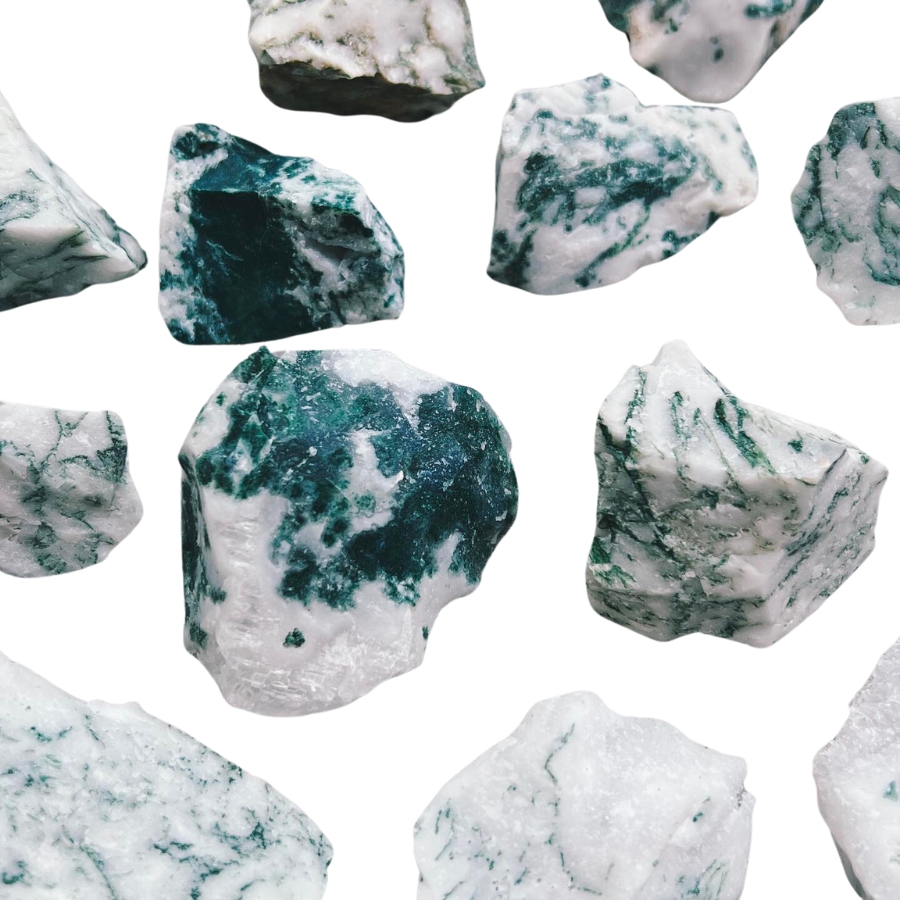
Tree agate, as its name suggests, looks like it’s got tiny trees or branches inside it. These tree-like patterns are usually green and spread out against a white or light gray background.
The green patterns aren’t actual trees, though. They’re made of minerals like chlorite or manganese.
Each piece of tree agate is different. You won’t find two that are exactly the same. It’s valued for its looks and it’s often used in jewelry and decorations.
The key factors in our recommendations are:
- The deep experience and understanding of our team about the area
- Recommendations from local groups and clubs
- How easy it is to get the a particular location
- Safety and potential hazards when collecting
- Weighing private and public locations
- The ability for both experienced and novice agate enthusiasts to find great samples
With these factors in mind we’ve been able to put together a fantastic list that just about anyone can use!
Kids. Beginners. Pros. Doesn’t matter. This book has become the go-to because it works for everyone.
Magy put it bluntly: “Identify rocks, crystals and minerals is so easy now!”
That’s not by accident, the photos are crisp, the callouts are simple, and the design is rugged enough to throw in a backpack without worrying. Whether it’s your first geode or your hundredth, this guide keeps the fun part simple: finding more treasures.
The Best Spots To Find Agates in Virginia
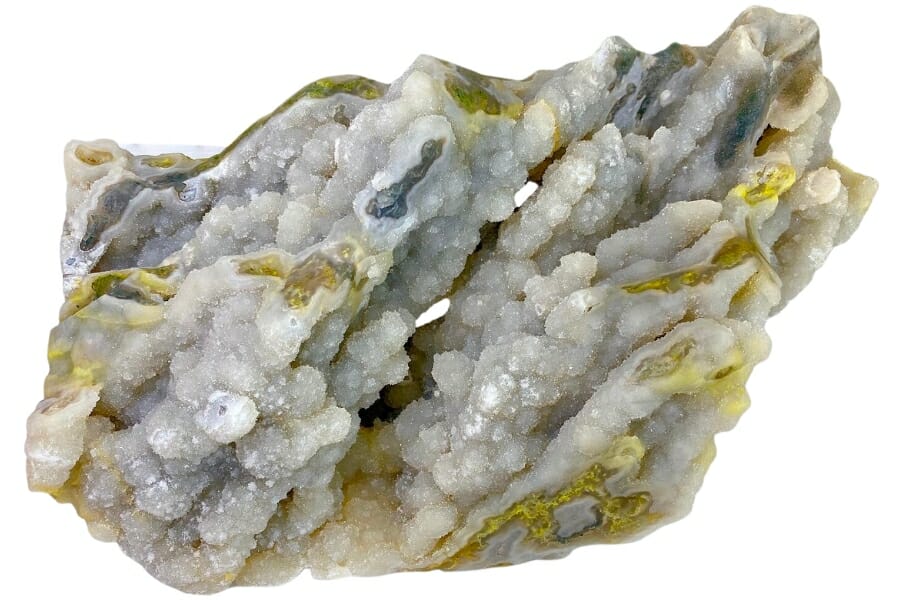
As a geologically diverse state, it’s no surprise that there are many great gem mine sites in Virginia. However, not all of these sites have agates in them. If you want to focus on finding these beautiful rocks, we recommend the following sure spots:
Always Confirm Access and Collection Rules!
Before heading out to any of the locations on our list you need to confirm access requirements and collection rules for both public and private locations directly with the location. We haven’t personally verified every location and the access requirements and collection rules often change without notice.
Many of the locations we mention will not allow collecting but are still great places for those who love to find beautiful rocks and minerals in the wild without keeping them. We also can’t guarantee you will find anything in these locations since they are constantly changing.
Always get updated information directly from the source ahead of time to ensure responsible rockhounding. If you want even more current options it’s always a good idea to contact local rock and mineral clubs and groups
Buck Mountain Creek
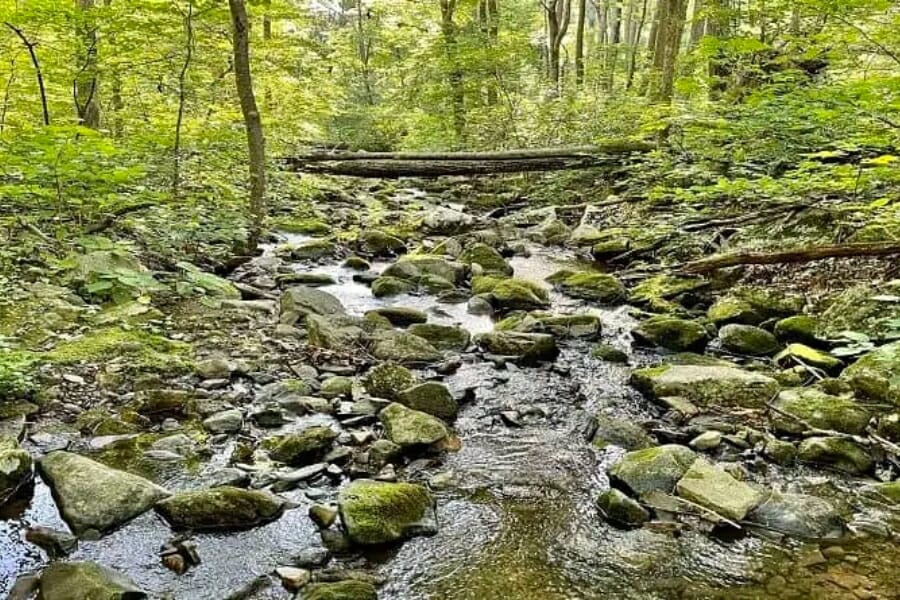
Winding its way through picturesque landscapes, Buck Mountain Creek offers breathtaking views of rolling hills, lush forests, and the ever-changing face of nature. Its waters ripple over rocks and pebbles, reflecting the beauty of our countryside.
This creek sits among terrains that are both rugged and gentle. There are areas where the land rises sharply, forming hill-like structures, while other parts are flatter, providing a gentle canvas for the creek to flow.
Over millions of years, layers of sediment have been deposited here, making it a treasure trove of natural treasures. Among the rocks and minerals found in this region, the creek area is known for its agate.
Buck Mountain Creek isn’t too difficult to reach since the roads leading to it are decent. Make sure, though, to get familiar with the local collecting guidelines of Virginia before starting your exploration here.
Where we found agates in the Buck Mountain Creek
Keep your eyes peeled for beautiful gray agates when you explore the different nooks and crannies of Buck Mountain Creek.
Walker Mountain
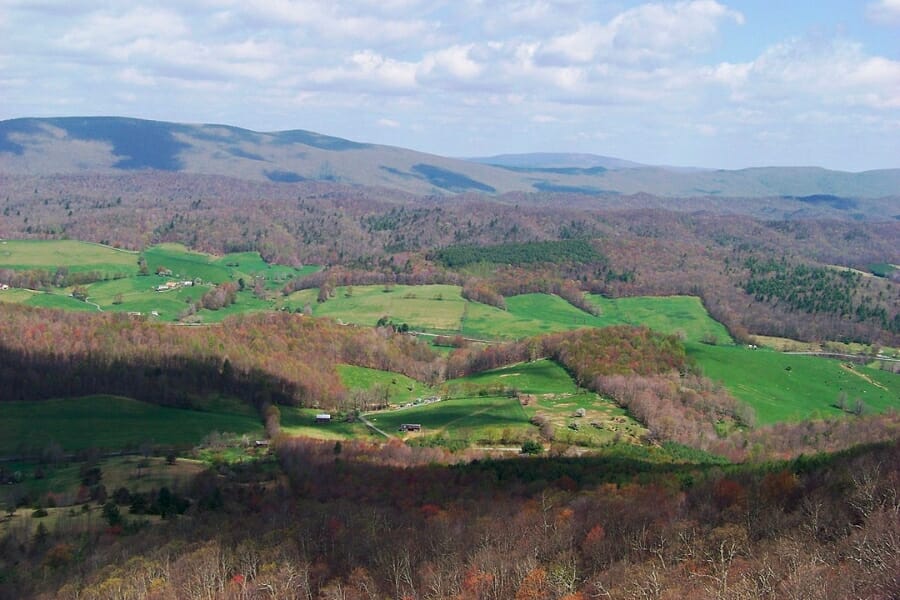
Standing tall and proud, Walker Mountain is part of the majestic Appalachian range. It stretches across the landscape, offering a mix of both challenging and gentle terrains.
The mountain has witnessed millions of years, and it’s got the rocks to prove it! Among the rich tapestry of minerals here, a special mention goes to agate. Over the years, geological activities like volcanic eruptions and shifting tectonic plates have blessed this area with a diverse range of rocks and minerals.
If you’re thinking of visiting, getting to Walker Mountain is a breeze. Well-maintained roads will guide you to its base, and from there, a world of exploration awaits.
Where we found agates in the Walker Mountain
You can find mesmerizing agates if you explore the sides of the Walker Mountain area.
Dixie Caverns
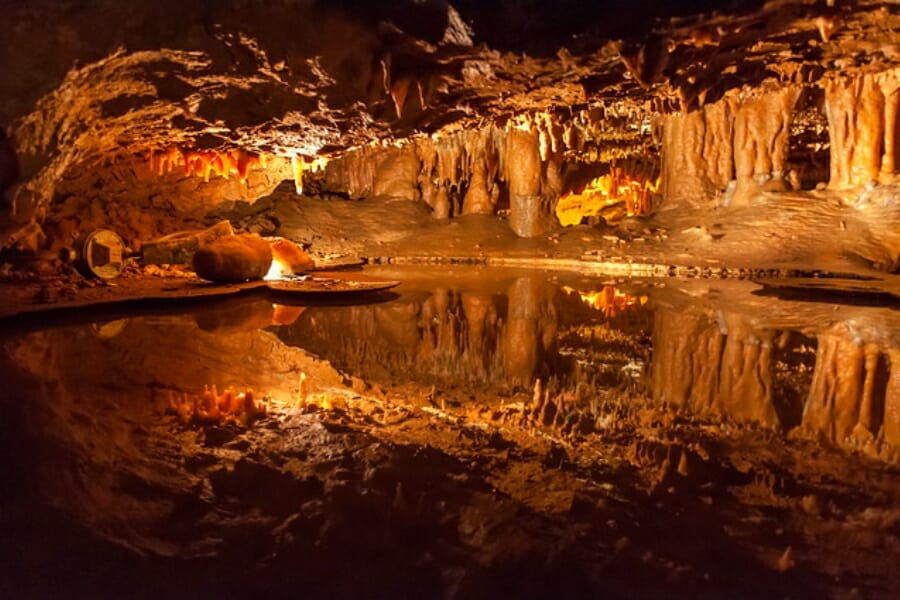
Located just a short drive from Roanoke, Dixie Caverns is an underground wonder that offers a maze of chambers and passageways. As you venture into it, the ground may feel a bit damp and the air cool, a stark contrast to the world outside.
The terrain inside the caverns is something straight out of a fantasy novel. Stalactites hang from the ceiling like nature’s chandeliers, and stalagmites rise from the ground. Drip by drip, as water that carries minerals seeped through the limestone, it left behind these breathtaking structures.
Inside, well-lit pathways and guided tours ensure that even those new to cave exploration can enjoy the experience safely.
If you’re wondering about the journey to Dixie Caverns, it’s a breeze! Conveniently located near major highways, getting here is straightforward. Clear signs guide the way, and there’s ample parking for visitors.
Where we found agates in Dixie Caverns
Explore the exposure behind Dixie Caverns in Salem to find beautiful pieces of agates, including smoky agates.
Bull Run Soapstone Quarry
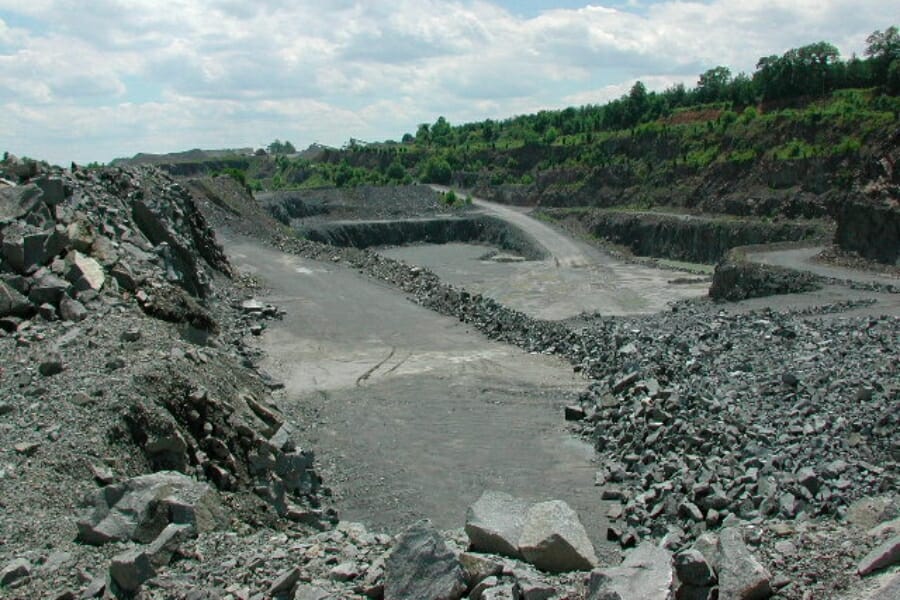
Nestled in the northern part of Virginia, Bull Run Soapstone Quarry has been a hotspot for those curious about the secrets buried beneath the ground.
The quarry’s terrain is both rugged and revealing. Over time, as rock was extracted, nature’s layers were exposed. The primary rock here, as the name suggests, is soapstone. But wait, there’s more! Hidden among the soapstone are traces of agate!
If you’re eager to visit Bull Run Soapstone Quarry, you’re in for a treat. Situated not too far from urban centers, the quarry is relatively easy to access. Main roads will lead you close, and from there, a short drive or walk will bring you to the site.
Where we found agates in the Bull Run Soapstone Quarry
You can find dark red moss agates if you search through the different parts of the Bull Run Soapstone Quarry in Centreville.
Fairfax Courthouse

Fairfax Courthouse is not just a place of history, but also a site of geological intrigue! Situated in the bustling heart of Fairfax County, it’s more than just legal proceedings and historical buildings.
While parts of its terrain have been developed, reflecting its urban setting, you’ll also find pockets of greenery, gentle hills, and small streams. These natural landscapes hint at the area’s geological past.
Beneath the ground, a variety of rocks and minerals can be found, and among them are hints and whispers of agate!
Being a central location, Fairfax Courthouse is well-connected by major roads and public transportation, so going here is pretty easy. Whether you’re coming in by car, bus, or metro, clear signage will guide you.
Where we found agates in the Fairfax Courthouse
Explore the area cuts of Fairfax Courthouse to find stunning agate specimens.
Other Great Places To Find Agates in Virginia
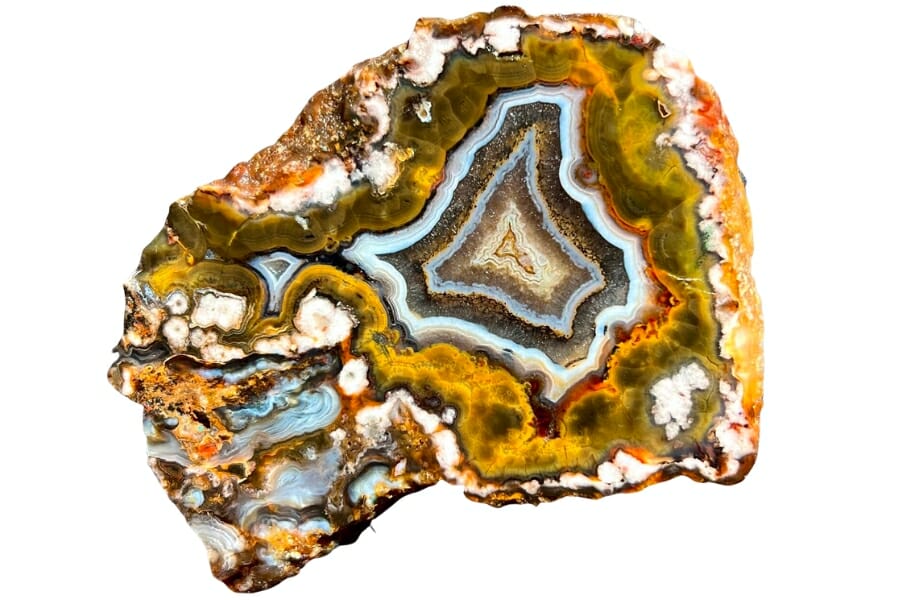
On top of our recommended sure spots to find agates in Virginia, you can also choose to visit and explore the following agate-bearing sites here:
Our recommendations by county
| County | Location |
| Amelia | Morefield Mine |
| Arlington | Long Branch |
| Chesterfield | Gravel pits in Richmond-Petersburg Toll Road |
| Loudoun | Mt. Zion Church |
| Loudoun | Hamilton |
| Pittsylvania | Gardner Farm |
| Pittsylvania | U.S. Highway 360 roadcut |
Additional areas you can find agates
We recommend paying extra attention to the following general areas where agates are usually hiding. This is especially helpful if you’re exploring places that cover big areas.
Streams and Creeks
As nature’s conveyor belts, streams and creeks carry away soil and reveal hidden treasures beneath. As water flows, it erodes the surrounding rocks and land. This process can uncover stones that were buried deep underground, including agates.
As Virginia’s creeks and streams wind their way through mountainous regions and ancient geological formations, they wash down agates from their original locations.
So, when you’re exploring a creek bed, especially after a good rain, you might just spot an agate peeking out from the wet gravel.
Quarries
For anyone with a love for rocks, a visit to a quarry can be like a day at a candy store!
When we dig deep into the ground to extract rocks, we’re also revealing hidden gems that have been tucked away for ages. Agates are one of these treasures. When the ground is broken up in quarries, these beauties can come to the surface.
In Virginia, quarries are more than just holes in the ground. They’re treasure troves! As machines and workers move and break the earth, agates that once were buried deep can be exposed to the light of day.
Road Cuts
Imagine slicing a big cake and seeing all the yummy layers inside. That’s what road cuts are like! When roads are built through hilly or mountainous areas, the earth gets cut away, revealing its inner layers.
Our state has a good number of these road cuts. As the roads weave through it, they expose rocks that might have been hidden for thousands, even millions, of years. Since the layers are so clearly visible on road cuts, spotting the patterns of agates becomes a tad easier.
So, if you’re driving through Virginia and spot a road cut, it might be worth a stop (safely, of course). Behind those layers of rock and dirt could be a shimmering find.
Common Agate-Hunting Questions
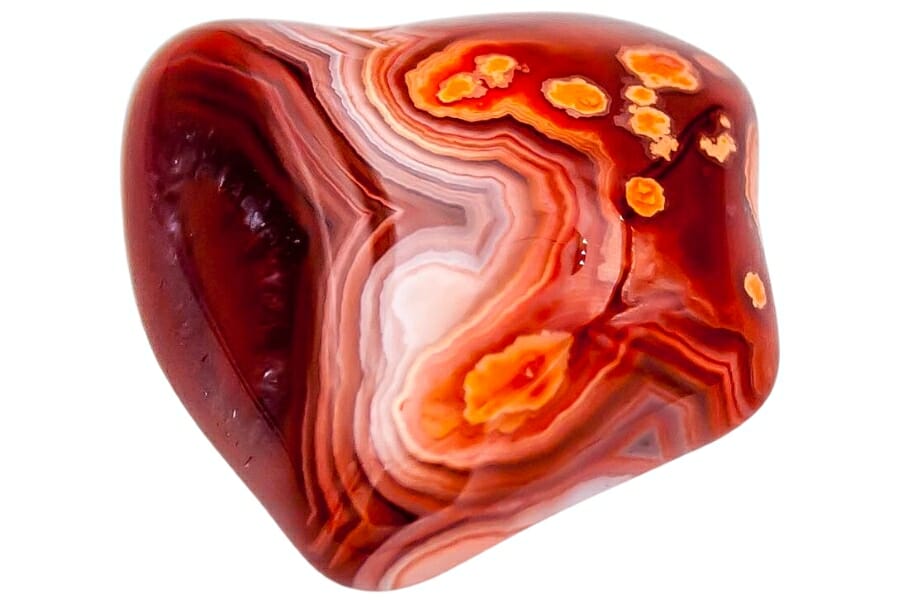
Here, we’ll answer what we’ve observed as the most frequently asked question when it comes to finding Virginia agates:
Is it illegal to collect agate in Virginia?
It’s legal to collect agates in Virginia for as long as you do so in compliance with our state’s collecting guidelines. It pays to know and check in advance if the area you’re planning on exploring is a designated collecting site.
It’s also crucial to be aware of any area-specific rules and regulations as they help you ensure your safety, while also protecting the environment and keeping rockhounding a sustainable activity in our state for years to come.
The Best Places To Buy Agates In Virginia
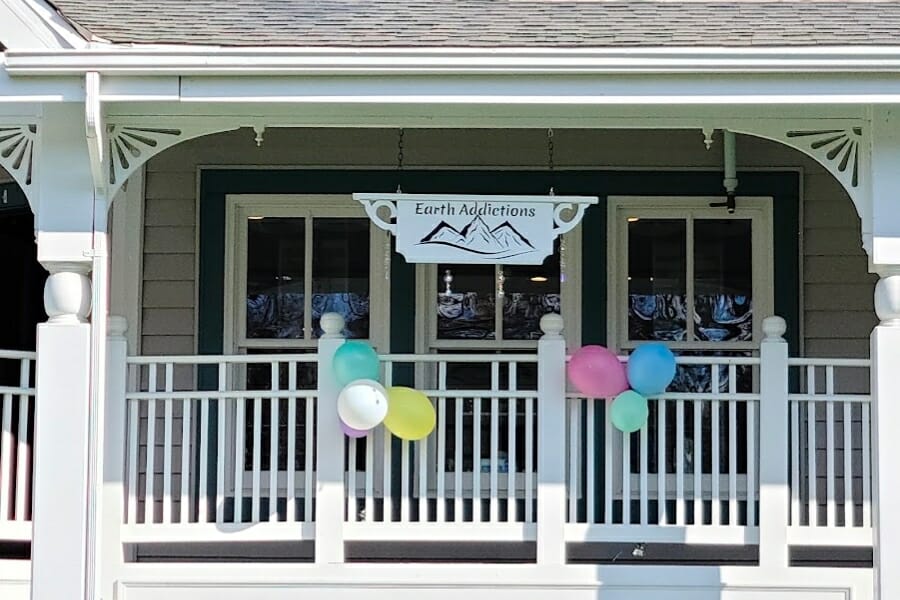
If you have limited resources to go on full-blown agate hunting here, you can also choose to visit our local rock and mineral shops that showcase and sell agates. Some of the best ones that we have are the following:
- Earth Addictions – 125 Mill St Suite 11, Occoquan Historic District, VA 22125
- Minerals & Mystics – 345 Hillsdale Dr, Charlottesville, VA 22901
- Spirit, Wood & Stone – E 32nd St, Norfolk, VA 23504
- Stone Goddess Rock Shop – 206 Chesterfield Ave, Colonial Heights, VA 23834
- The Crystal Case Rock Shop – The Barrett Street Antique Mall, 2645 Dean Dr. #901, Virginia Beach, VA 23452
- U Rock Art – 70 Coliseum Xing, Hampton, VA 23666, United States
- VaRockShop – 190 Rockfish School Ln, Afton, VA 22920
If you have any recommendations for our list please leave a comment below!

